
Published:
Readtime: 11 min
Every product is carefully selected by our editors and experts. If you buy from a link, we may earn a commission. Learn more. For more information on how we test products, click here.
| High point | Low point | Verdict |
| Comfortable, cushy, Cadillac experience with high-quality materials and best-in-class exterior and interior design. | Range is less than competitors despite it very likely costing more once it finally arrives in Australia in 2026. | The ‘Baby Escalade’ delivers on its mission to deliver a premium, powerful, comfortable, three-row electric SUV. We look forward to getting back behind the wheel in RHD form. |
The three-row (6-seat), all-electric, Cadillac VISTIQ is coming to Australia next year, and I’ve had the unique chance to drive 1,000 miles in it before it lands on our shores.
When it does, the VISTIQ will join a segment of luxury electric three-row SUVs currently occupied by the Kia EV9 and Volvo EX90. Soon, they will also be joined by the Hyundai IONIQ 9 and very likely something from China that we’ve never heard of before. Then, the Cadillac VISTIQ will arrive in 2026.
The VISTIQ will join the currently available Cadillac LYRIQ (from AUD$117,000 plus on-roads), which I drove last year, and the smaller Cadillac OPTIQ, which I had a chance to drive in Detroit, but can’t tell you about just yet. With an overall length of 5,222 mm, it sits above the LYRIQ (4,996 mm) and OPTIQ (4,821 mm) in size and is often referred to as the “Baby Escalade.” It’s about the same overall size as a Nissan Patrol (5,165 mm) and has about the same power as a Mercedes-AMG G63 with a dual motor 459 kW powertrain. Let’s take a closer look.
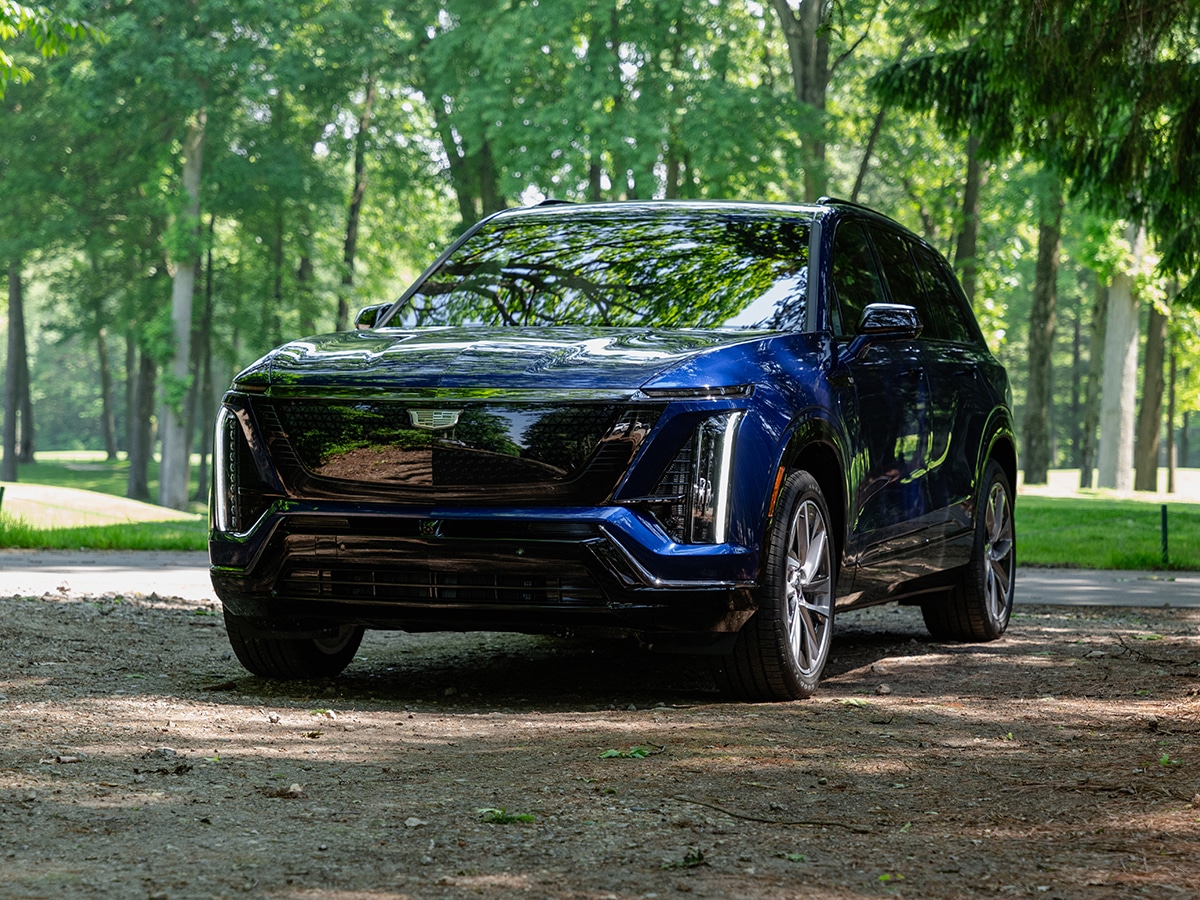
How Much is the Cadillac VISTIQ?
No local pricing has been announced for the Cadillac VISTIQ.
What we do know is that we’ll receive a fully-loaded vehicle with Adaptive Air Ride Suspension as standard and a 6-seat configuration only (2nd row Captain’s Chairs). This model will closely resemble the VISTIQ Luxury (from USD$93,590) and VISTIQ Platinum (from USD$98,190) in the USA market, which means that we should expect the VISTIQ to land in Australia at around the AUD$150,000 plus on-road costs.
What Does it Compete With?
Here’s a list of the main competitors for the Cadillac VISTIQ in Australia:
- Kia EV9 – from AUD$97,000 to $121,000 plus on-road costs
- Volvo EX90 – from AUD$124,990 to $134,990 plus on-road costs
- Hyundai IONIQ 9 – from AUD$119,750 plus on-road costs
The advantage for GM is that there aren’t many three-row electric SUVs on the market in Australia.
The disadvantage for GM is that when you look at sales data—which Cadillac doesn’t report to the media in Australia—there’s probably a reason why. Sales for the Kia EV9 have nearly halved this year (-47.3%), having sold just 19 cars last month and 165 through June. Meanwhile, the Volvo EX90 has fared better as a more traditionally styled vehicle from a premium marque that offers more range, and it’s managed 113 sales since hitting the market a few months ago.
When you consider the Cadillac VISTIQ will very likely start from around AUD$150,000, it’s going to have an uphill battle pulling diehards away from established brands like Volvo and Kia. Still, it’s going to throw everything it can at the Australian new car buyer on its quest to do so.
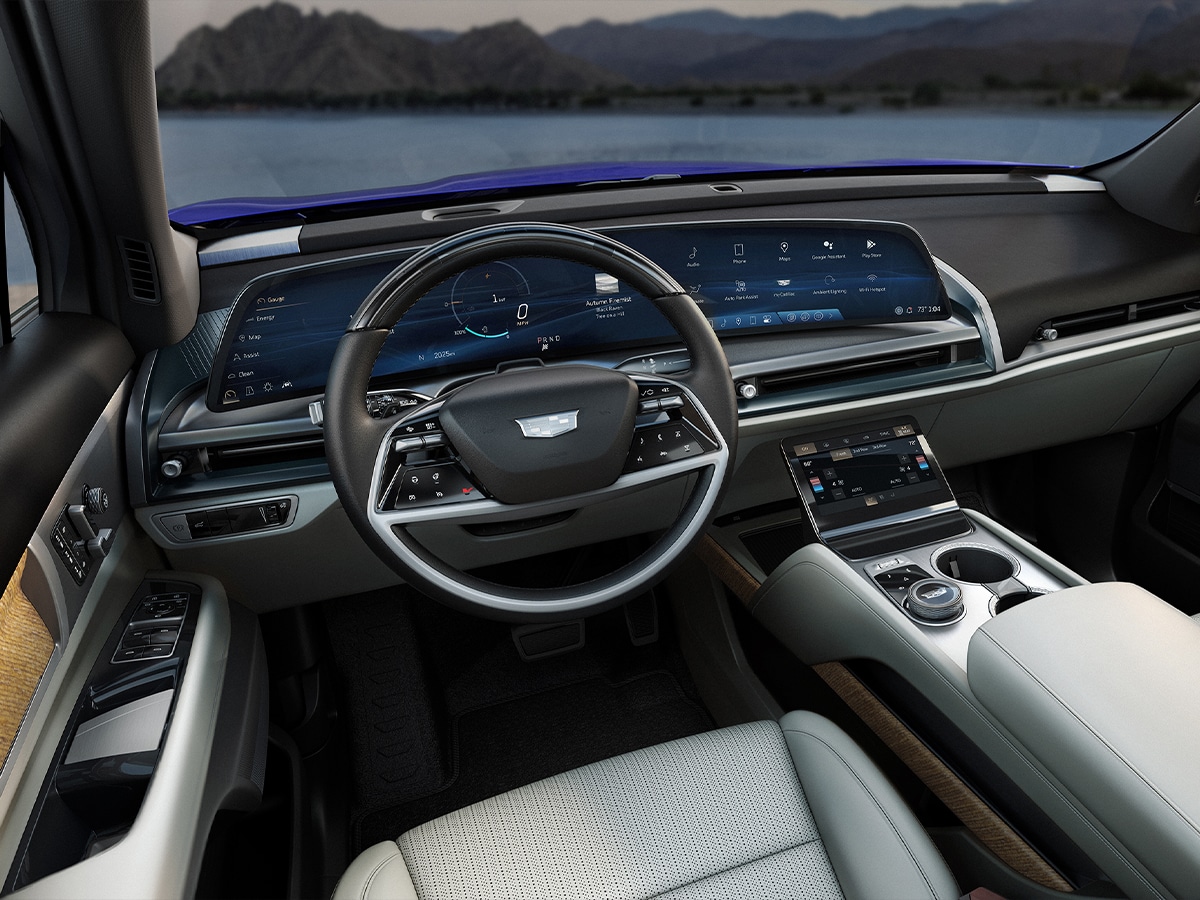
What’s the Interior of the Cadillac VISTIQ Like?
It’s very similar to the Cadillac LYRIQ, but that’s not a bad thing at all.
What we have to remember first is that this is not a conversion, but a factory-built right-hand drive vehicle. You wouldn’t be able to tell the two vehicles apart from a build quality perspective if you sat them next to each other, at least, that’s what we know from doing exactly that with the Cadillac LYRIQ.
The headline feature of the VISTIQ is that it’s a true three-row, 6-seat SUV that has genuine space in the third row for adults less than 6 feet tall. By the numbers, they stack up very similar to the Kia EV9, with 778mm of legroom in the third row, 1,021mm in the second row, and 1,096mm in the front row. However, the third row passengers in the 6-seat LYRIQ will likely feel more comfortable on longer trips thanks to the gap created by the second row captain’s chairs, but also the inclusion of padded armrests, smartphone storage, cupholders, and USB chargers.
We don’t have specifics confirmed for our market in terms of interior trim materials, but we expect the same Lumen open-pore wood found in the Luxury and Premium Luxury trims overseas or the Black Ash Cluster wood decors on Platinum trim. This should be joined by five-zone climate controls (with screen controls for the second row) and all the USB-C ports that you could ask for.
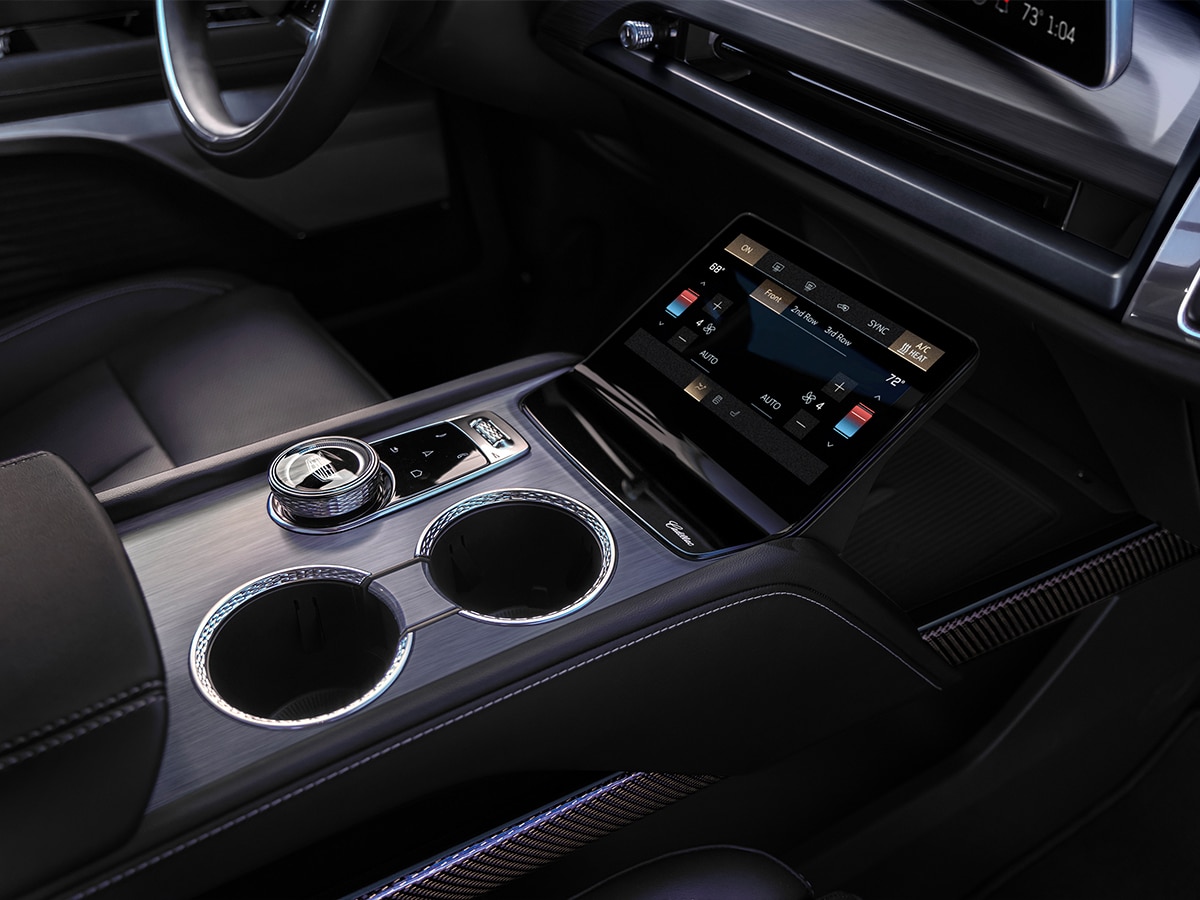
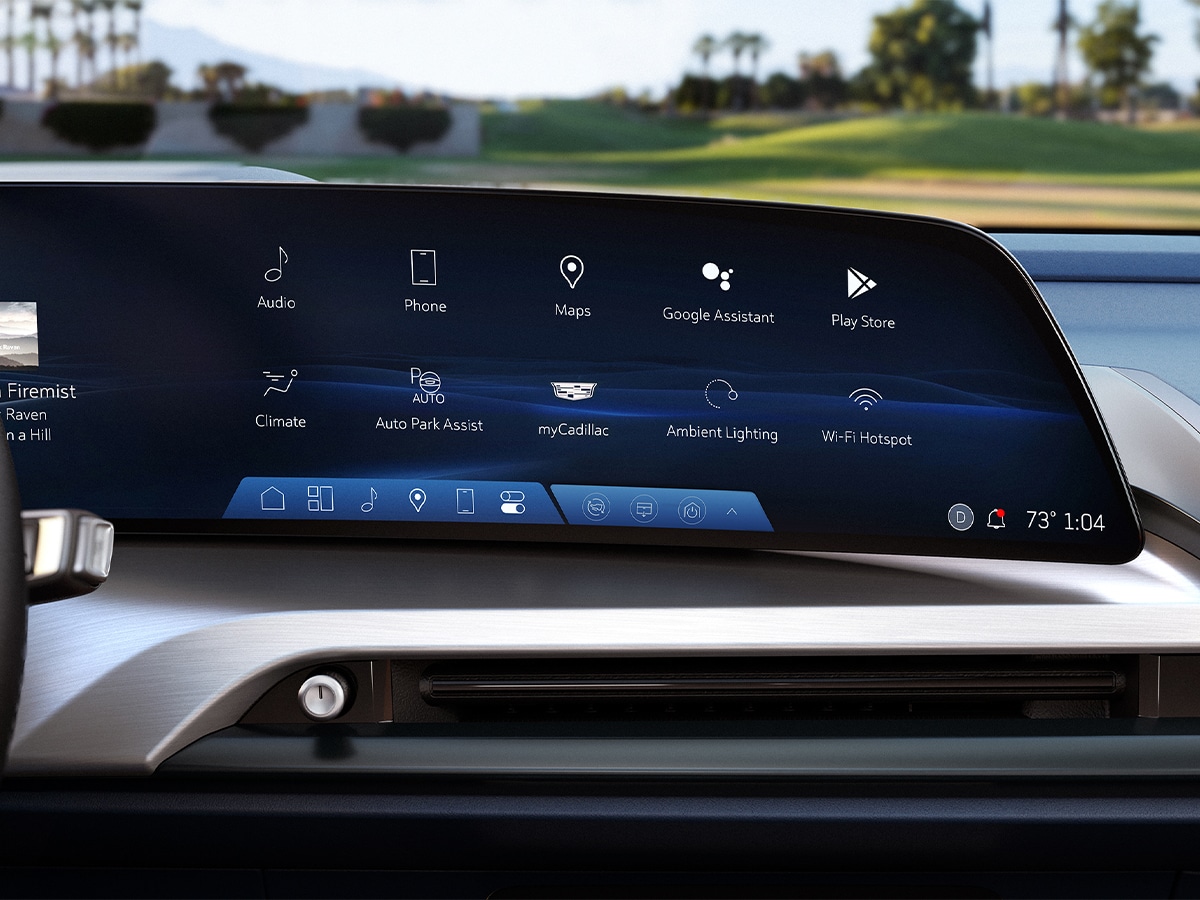
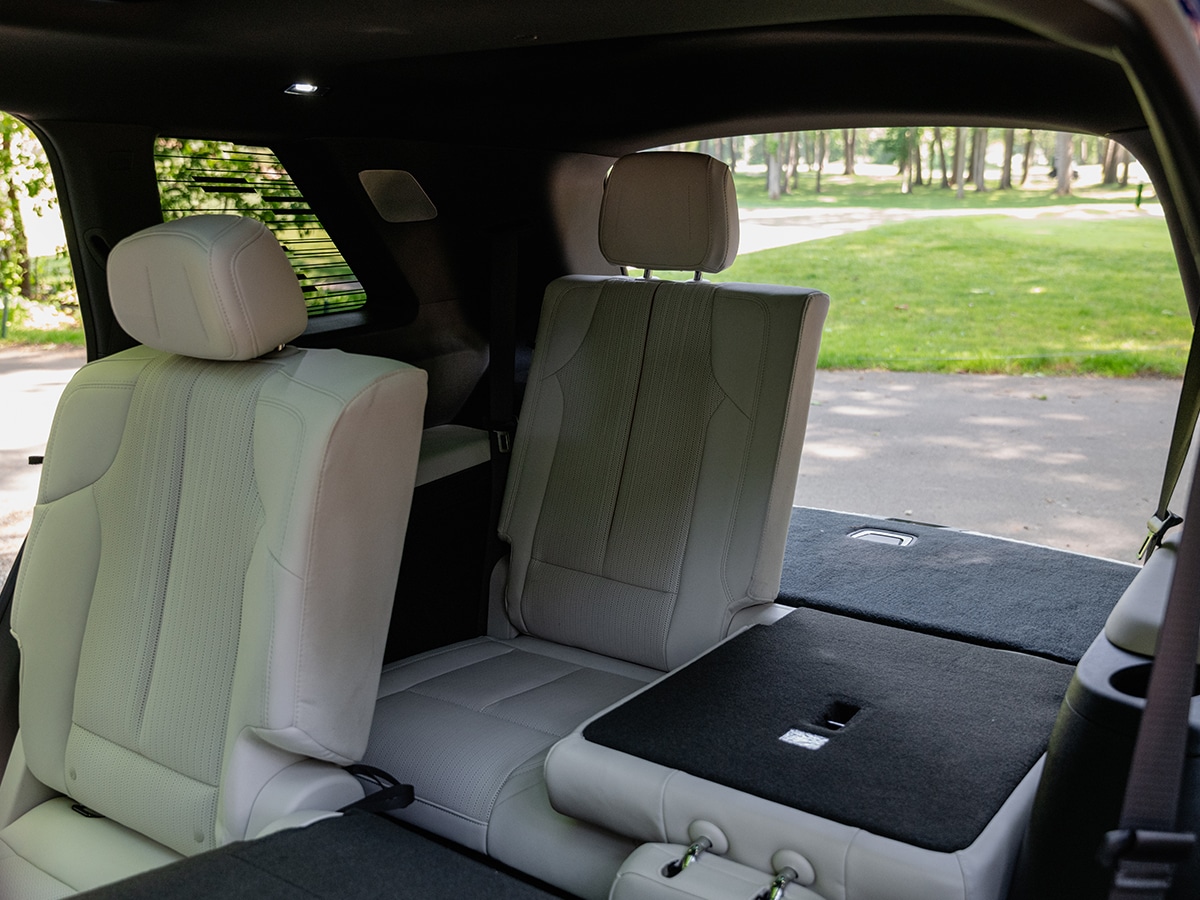
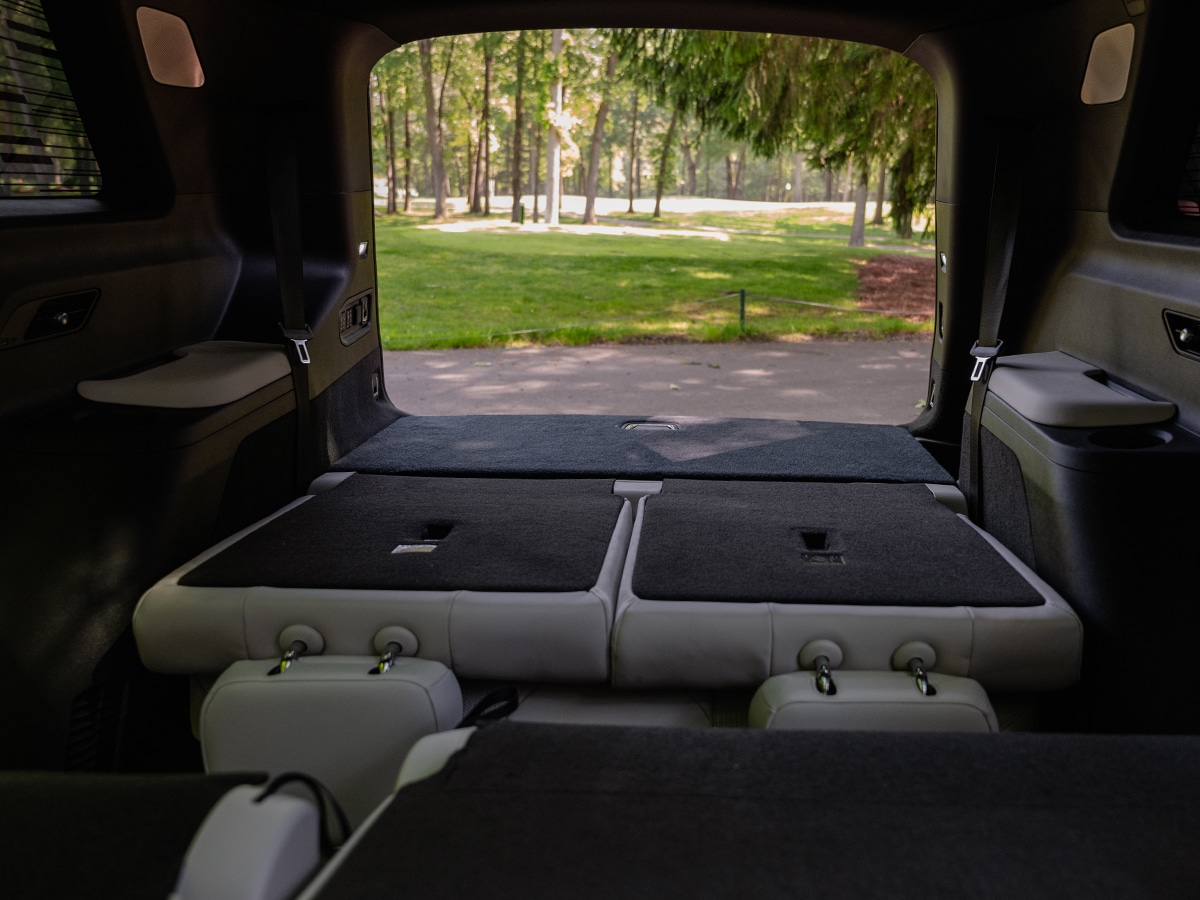
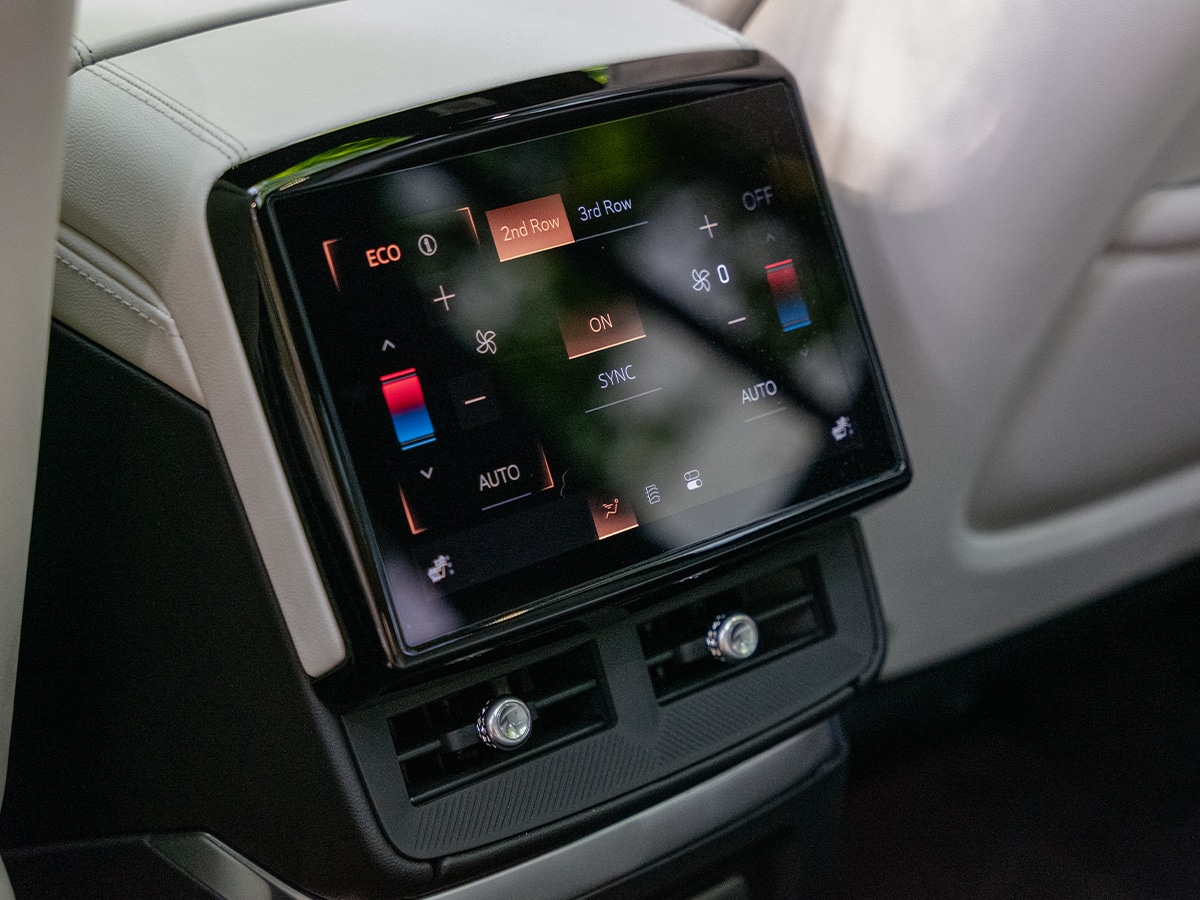
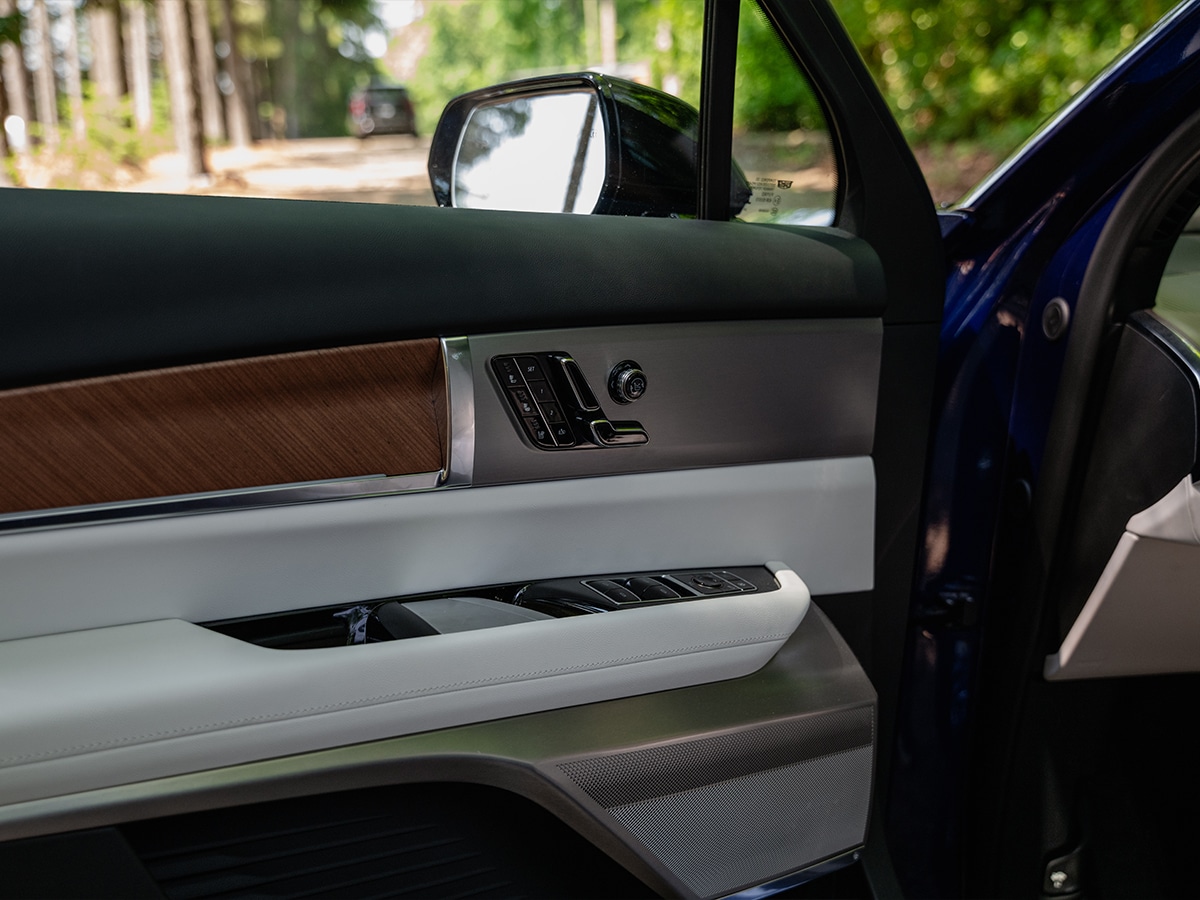
I spent the majority of my time in the driver’s seat of the VISTIQ while touring around California, and even in Sport trim, it was the typical, cushy and comfortable experience that you expect from a Cadillac.
That said, it’s not to be mistaken for a walloping hippo. The seats are supportive, feature heating (second-row captain’s chairs included), cooling, massage, and memory, and are infinitely adjustable to find that perfect driving position. As is the steering wheel, and while I’ve never been the biggest fan of the chunky spokes on the Cadillac wheel, it does sit comfortably in your hands on longer road trips and features all of the physical controls that I could ask for.
Usually, if I can get in a car, drive, and not become frustrated with how hard it is to find a common vehicle control, it’s a good barometer. While the screen does house many of the second-layer controls, the primary controls are found on knobs, switches, and dials, including the volume, track skip, mute, and cruise control functions. HVAC controls are positioned on a screen mounted to the centre console, similar to Audis. Importantly, these buttons are large enough to use while driving, and it’s not something that you adjust too often.
Finally, there’s a smaller screen on the left side of the instrument panel (right side in Australia) that houses your
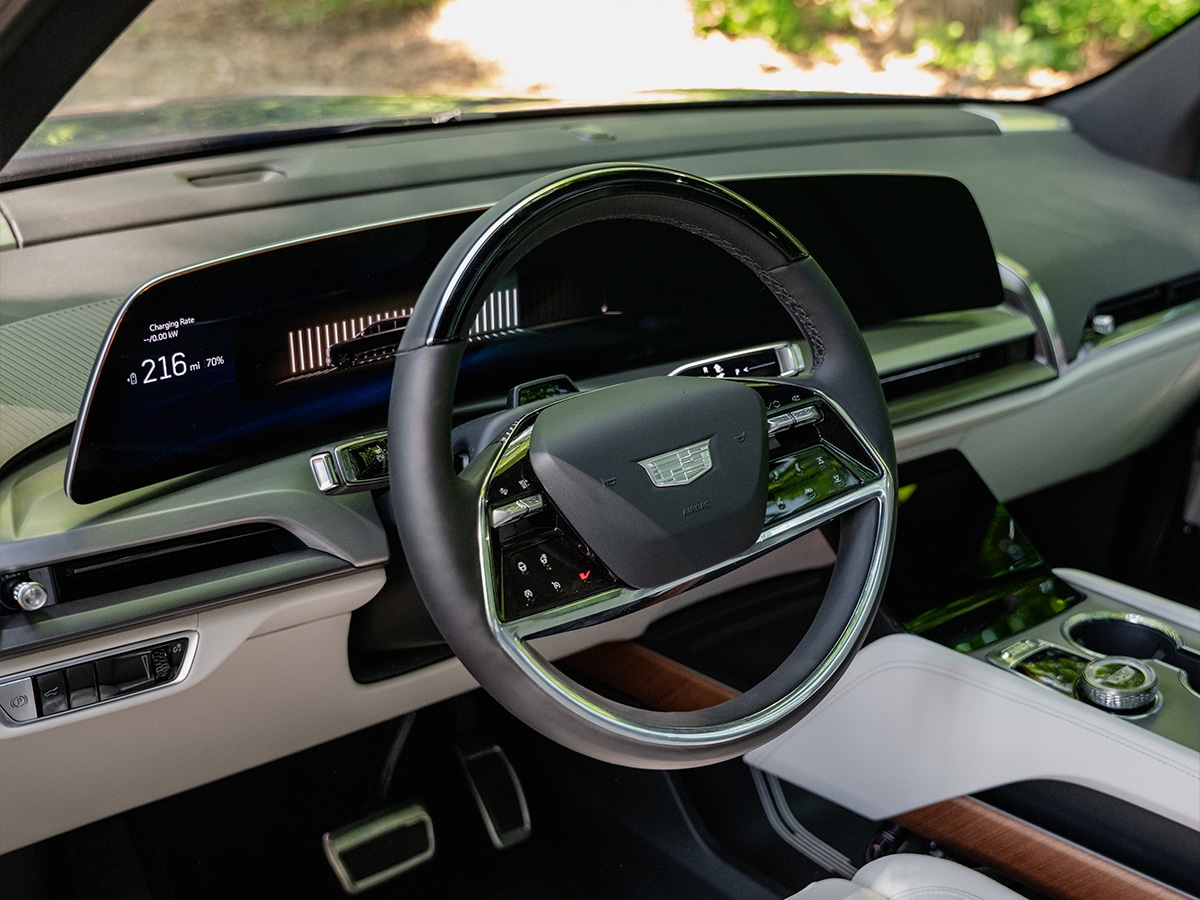
How does the interior of the VISTIQ compare to other cars in this segment? Well, I’ve just spent a week in the Volvo EX90, and having driven both, I can confidently say that I prefer the interior design of the Cadillac. Both have large touchscreen displays, but the Cadillac’s horizontally mounted 33-inch curved display is better integrated into the dashboard compared to the 14.5-inch portrait-style display in the Volvo. It’s plonked in the middle of the cabin, and while functional, it looks like an afterthought.
It will be interesting to see how the interior of the VISTIQ translates into the local market, but if it’s anything like the left-hand drive vehicle I drove around California, then I think the brand is onto a winner.
The only real negative to point at for buyers here is that it doesn’t have Apple CarPlay or Android Auto. Instead, it comes with Android Automotive, which uses integrated Google Maps for navigation, with other apps available as a download through the infotainment. Honestly, I hardly see this as a negative, as it functions better than any mapping tool outside of Waze, and even given the chance to use both in cars like the Volvo EX90, I end up using the integrated system over the phone mirroring option.
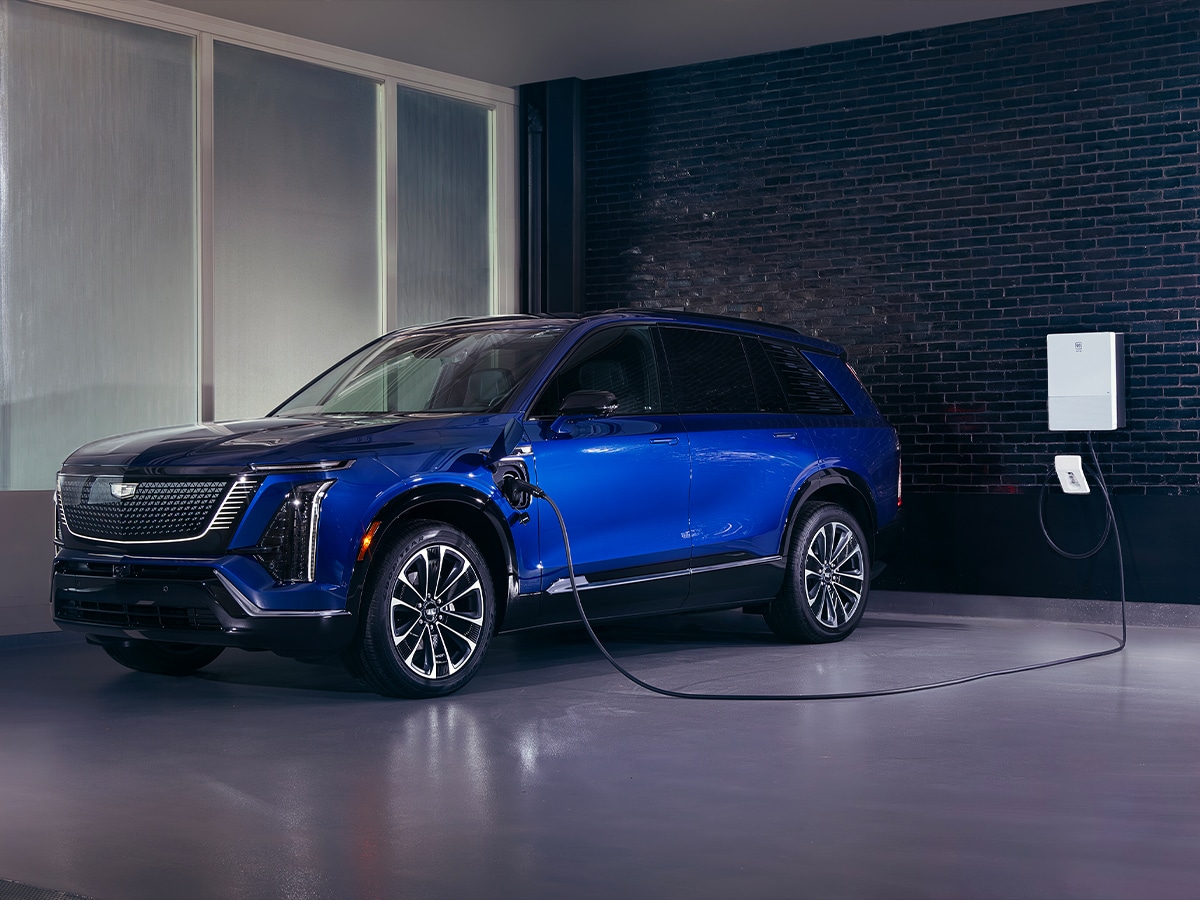
Power, Battery Charging, and Range of the Cadillac VISTIQ
The Cadillac VISTIQ is available as a 459kW (615HP) dual-motor AWD electric vehicle.
It’s powered by a large 102kWh Ultium battery offering up to 300 miles of range and the ability to accelerate from 0-60mph in 3.7 seconds with Velocity Max. That makes it more powerful and quicker than its competitors, but not quite as impressive on the range front when compared to the Volvo EX90, which offers up to 605 km of range.
| Specifications | Cadillac VISTIQ |
|---|---|
| Drivetrain | Dual motor AWD |
| Battery capacity | 102 kWh (usable) |
| Battery type | Nickel manganese cobalt aluminium (NCMA) |
| Power | 459 kW (615 HP) |
| Torque | 880 Nm |
| 0-60 mph (0-96 km/h) time (claimed) | 3.7 seconds with Velocity Max |
| Weight (kerb) | 2,869.5 kg |
| Energy consumption (claimed) | 21.8 kWh/100 km (WLTP) |
| Energy consumption (as tested) | 22.2-28.2 kWh/100 km |
| Claimed range | 460 km (WLTP) test cycle in Europe |
| Max AC charge rate | 11.5 kW, 19.2 kW (optional) |
| Max DC charge rate | 190 kW |
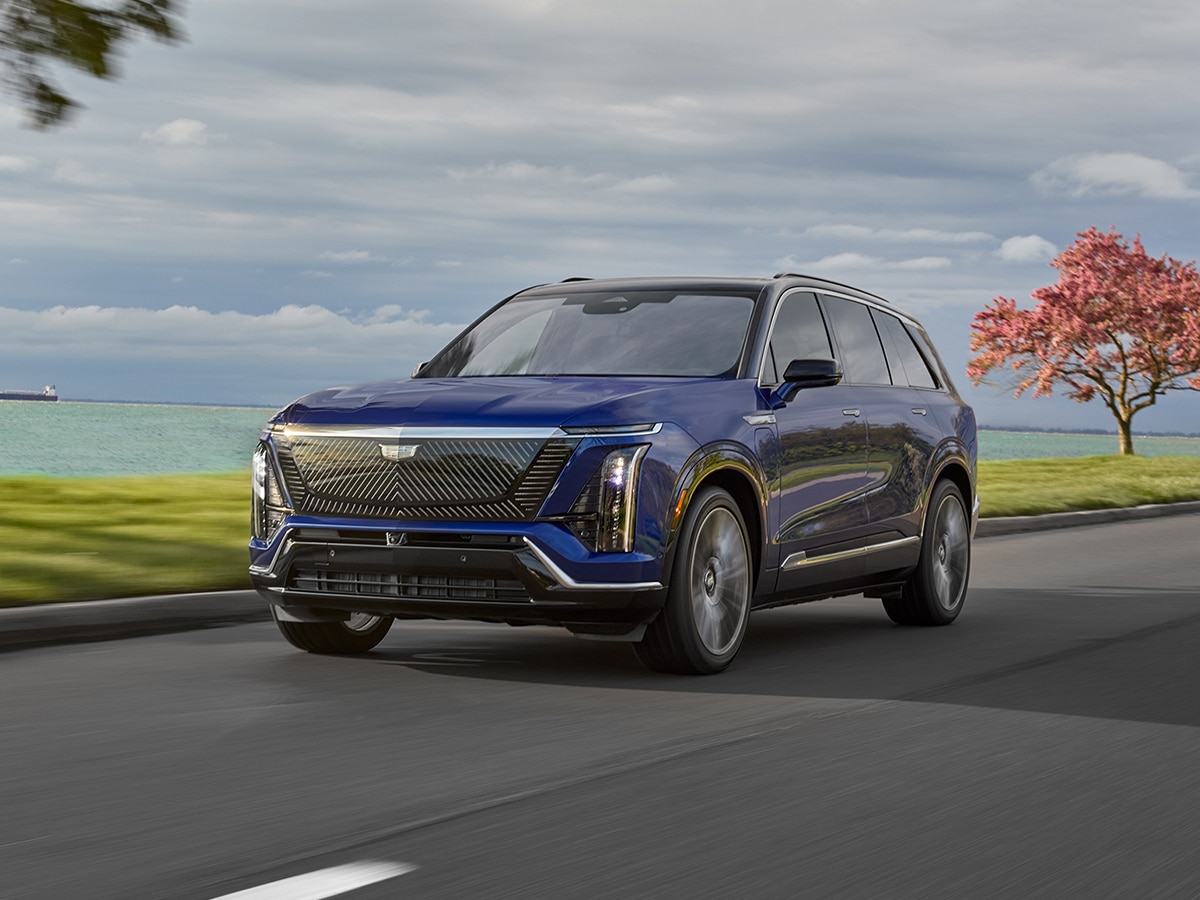
How Does the Cadillac VISTIQ Drive?
Every Cadillac VISTIQ coming to Australia will have Air Ride Adaptive suspension fitted as standard alongside a multi-link front and five-link rear suspension system with semi-active Chassis Damping Control dampers.
I had the chance to drive both the standard suspension and the Air Ride Adaptive suspension in and around suburban Detroit, and both provided a comfortable, balanced ride when cruising around in the normal Tour mode. Of course, it rides better on the smaller 21-inch wheels than the optional 23-inch wheels, but they aren’t terrible by any means. The price of tyres could make the 23s prohibitively expensive to run in Australia, however.
| Front and rear suspension | Multi-Link front and 5-Link rear with semi-active CDC dampers (Chassis Damping Control) |
| Steering type | Electric Power Steering (EPS) |
| Turning Diameter with active rear steer and 23-inch wheels | 11.7 metres |
| Turning diameter with active rear steer and 22-inch wheels | 12.5 metres |
| Turning diameter with active rear steer and 21-inch wheels | 11.64 metres |
| Brake type | Front: 4-piston Rear: 1-piston Front (Platinum): 6 piston Brembo Brakes Rear (Platinum): Paint matched single piston |
| Brake rotor size: (in. / mm) | 343mm (front) 345mm (rear) Platinum: 410mm (front) 345mm (rear) |
| Wheel size: | Front: 4-piston Rear: 1-piston Front (Platinum): 6-piston Brembo Brakes Rear (Platinum): Paint matched single piston |
| Tires: | Tires, 285/45R21 all-season, self-sealing Tires, 295/40R22 all-season, self-sealing Tires, 305/35R23 all-season-self-sealing |
On my road trip, I found there was no hiding the 2,869kg weight through the tightening corners and sharper bends of Big Bear National Park, but you can take advantage of the included Sport drive mode to stiffen up the suspension to counteract the exaggerated body roll and keep your passengers comfortable. Still, it’s far from nimble. That’s not the point of a 5.2 metre long, three-row electric SUV, though.
While heavy, the size is manageable with available rear-wheel steering that can turn the rear wheels up to 3.5 degrees in the opposite direction to shorten the turning circle and increase maneuverability.
There’s a bright red V button on the steering wheel that stares at you while driving and unlocks the full 459kW (615HP) dual motor powertrain that makes overtaking a breeze. Like the LYRIQ, the acceleration isn’t as brutal as the power figure might imply, but that’s intentional on Cadillac’s part. They’ve minimised ‘lash controlling’, which can cause discomfort to passengers while driving, particularly the children who might be sitting in the back.
EV features like regenerative braking are calibrated perfectly, and you can even bring the vehicle to a stop using the paddle behind the steering wheel. Overall, I was quite impressed.
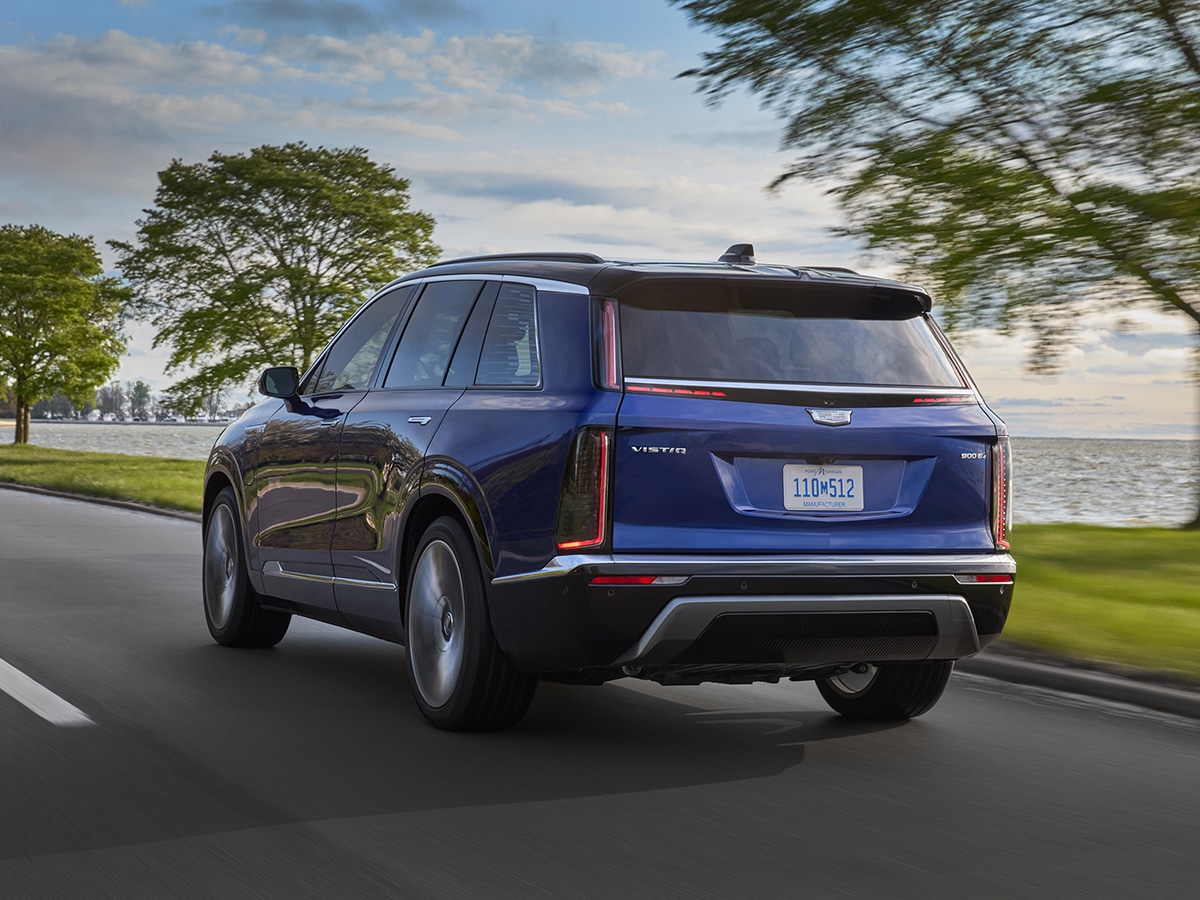
How Safe is the Cadillac VISTIQ?
Here’s a list of safety equipment found in the U.S. market:
- Driver-assistance
- Super Cruise® hands-free driving on highways (not coming to Australia)
- Blind Zone Steering Assist
- Adaptive Cruise Control
- Driver Attention Assist*
- Traffic Sign Recognition
- Alerts
- Forward Collision Alert
- Rear Pedestrian Alert
- Side Bicyclist Alert
- Safety Alert Seat (directional vibration warnings)
- Rear Seat Reminder*
- LED Reflective Windshield Collision Alert
- Vision assistance
- HD Surround Vision (360° camera)
- Rear Camera Mirror with washer
- IntelliBeam® automatic high-beam assist
- Hitch Guidance with Hitch View
- Emergency braking
- Enhanced Automatic Emergency Braking
- Intersection Automatic Emergency Braking
- Rear Cross-Traffic Braking
- Front Pedestrian & Bicyclist Braking
- Reverse Automatic Braking
- Parking assistance
- Vision Enhanced Automatic Parking Assist
Despite a long list of standard safety equipment (U.S. market), the Cadillac VISTIQ hasn’t been tested by ANCAP, Euro NCAP, or similar in the USA.
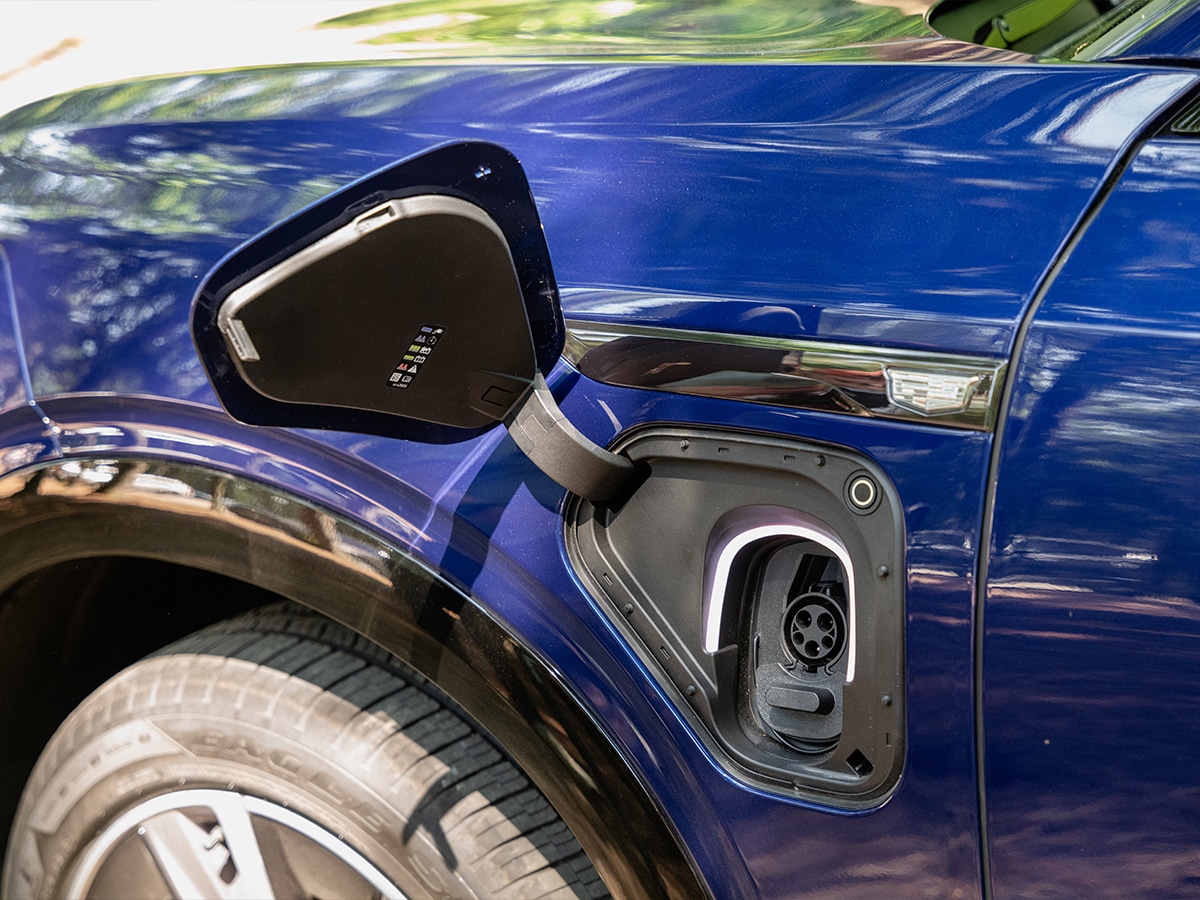
What Does the Cadillac VISTIQ Cost to Run?
The VISTIQ will likely carry the 5-year, unlimited-kilometre warranty and 8-year, 160,000km battery warranty from the LYRIQ. However, this hasn’t been confirmed for the Australian market just yet.
There’s also a very strong chance it will arrive with the 5-year free roadside assistance and free scheduled servicing. Services are required every 12 months or 12,000km with the LYRIQ, which are standard for most vehicles in this segment.
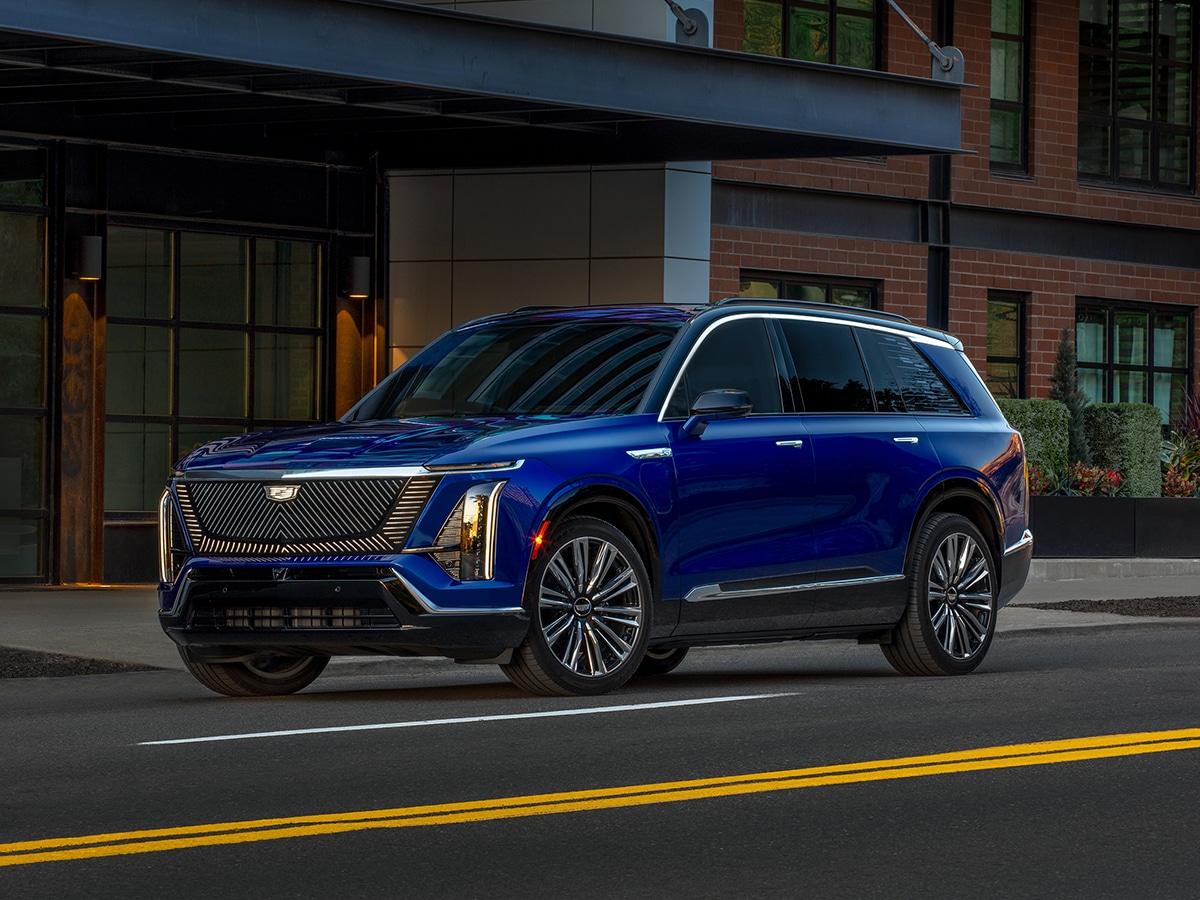
Our Verdict on the Cadillac VISTIQ
Like the LYRIQ, the Cadillac VISTIQ delivers on paper and in the real world.
It boasts the range, performance, technology, and equipment to compete with the top vehicles in its class, and if you’re in the market for a three-row all-electric SUV, then this has to be on your shortlist.
Sales of the established competitors from Kia and Hyundai are slowing in the local market, but Volvo has proven that brand loyalty and confidence go a long way. Cadillac, on the other hand, will have a tougher time doing so, but they’re putting their best foot forward with the VISTIQ.
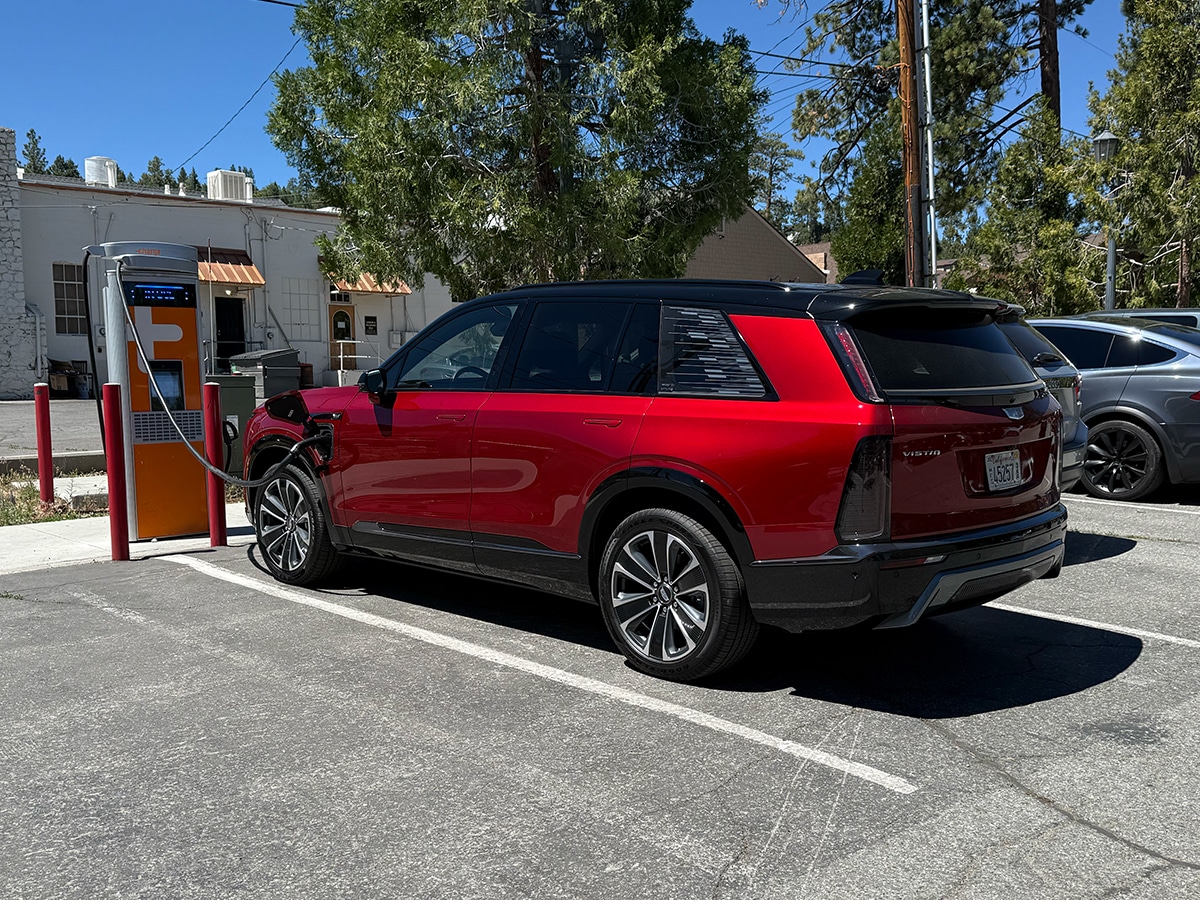








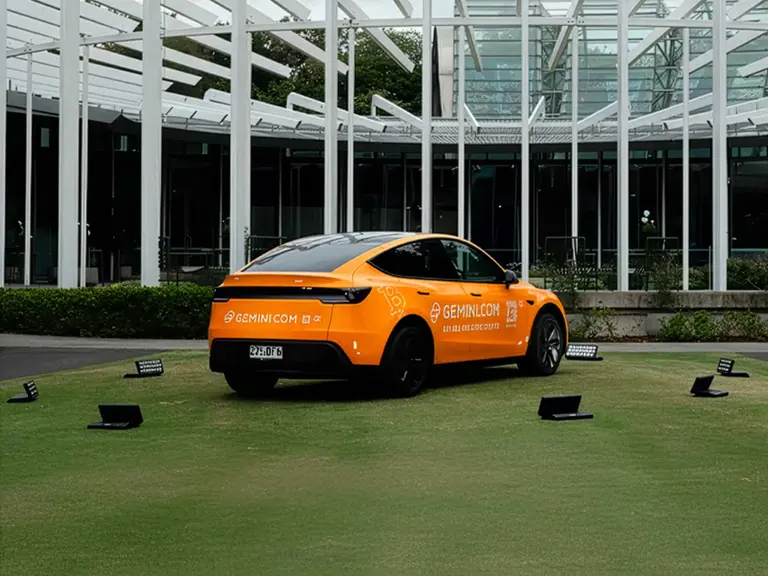
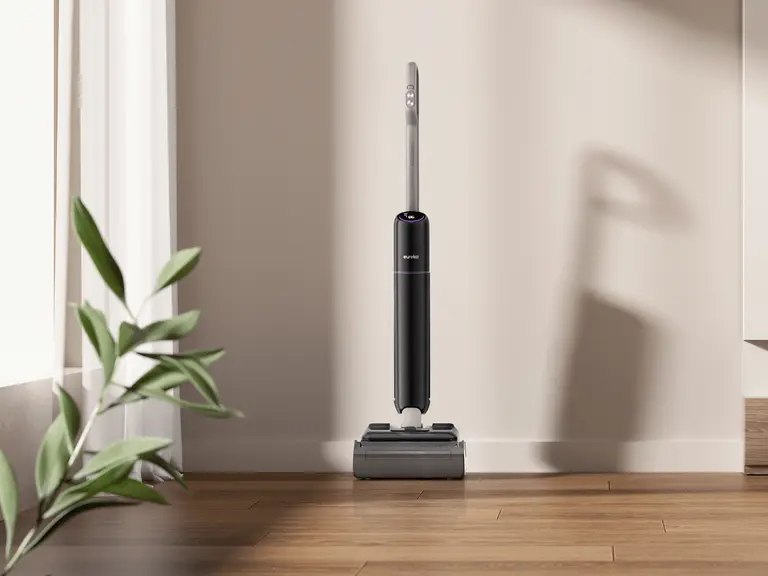








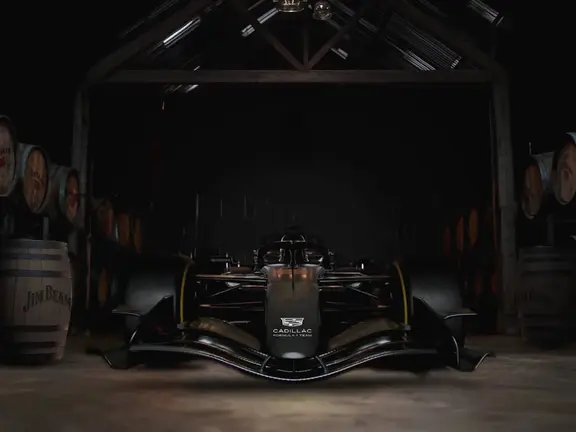










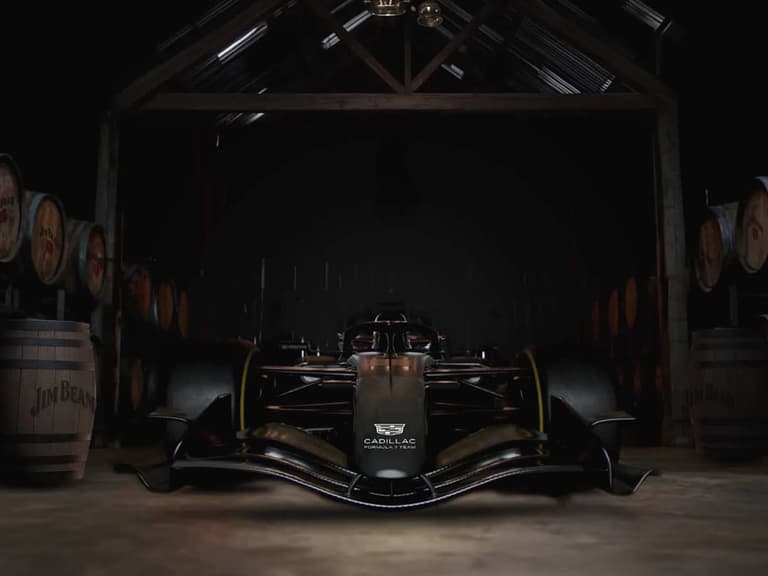




Comments
We love hearing from you. or to leave a comment.